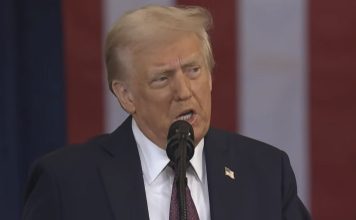Holiday time is fast approaching, but unfortunately Santa (and millions of families) will be forced to quarantine throughout December. Kris Kringle has offloaded many of his responsibilities onto the United States Postal Service (USPS), which will deliver a historically large load of packages this holiday season. But, because USPS package prices are hopelessly out of whack with reality, delivering this year’s presents will blow a hole in the agency’s already-abysmal finances. By realigning parcel prices to reflect delivery costs, USPS can deliver holiday cheer and “sleigh” financial expectations.
Even in a “normal” year, the USPS delivers more than 20 million packages per day for the last eight weeks of the year and nearly 30 million packages per day the week before Christmas. And, according to USPS Strategic Communications Specialist Floyd Wagoner, “From this point forward, all the way until Christmas, and into the middle of January with return packages, this would be the busiest year ever.” Even though, “the volumes are just too great for us to understand exactly how many are going to be coming through,” the agency hopes that a record influx and delivery of packages will stem the deluge of red ink flooding the agency.
The USPS reported a fiscal year (FY) 2020 net loss of $9.2 billion, up from $8.8 billion in 2019. In its latest financial statement, the agency notes that package volume increased 18.8 percent from last year while first-class mail and marketing mail respectively declined by 4.2 percent and 15.2 percent. Sure, operating revenues are up $2 billion due to the unprecedented surge in e-commerce spurred by pandemic-era digital shopping. But this revenue increase couldn’t keep up with a whopping $2.3 billion increase in operating expenses, mostly due to the “workforce additions necessary to address the surge in package volume as a result of the pandemic.”
These disappointing figures do little to counter the long-held suspicion among financial analysts that package prices do not reflect delivery costs. When calculating costs for different product categories, the devil is in the details. Trucks, scanners and employee compensation each add costs to the delivery of packages and regular letters, and USPS’ financial team must attribute a certain percentage of these costs to each product category. How the agency goes about doing this is a mystery to the public, but there are clues that the USPS is missing the mark and underestimating package delivery costs.
For example, according to the inspector general (IG), the USPS has been equipping its staff with handheld GPS-enabled Mobile Delivery Devices “to scan and transmit package tracking data.” Bizarrely, less than a tenth of the depreciation costs associated with these scanners is attributed by the USPS to competitive products (i.e. packages). Overall, less than $5 million in USPS total property and equipment assets (out of about $15 billion total) is attributed to “competitive products enterprise.” Common sense says that these calculations are grossly skewed.
Unfortunately, the struggling agency shows little indication of changing the way it calculates and attributes package delivery costs. The USPS has collaborated closely with Lockheed Martin in developing “Enhanced Package Processing Systems” (EPPS), which ideally process 25,000 packages per machine per hour. Financial analysts have noted, however, that the USPS appears to attribute a significant percentage of EPPS costs to traditional letter mail. Either this is an accounting error, or the USPS is making its package processing apparatus look artificially cheap to downplay package delivery costs. Regardless of the reason, the discrepancies are alarming because these cost assumptions are baked into package delivery prices. Financial analysts will never know the root or extent of the problem unless the notoriously tight-lipped agency opens their books to the public and discloses its methods for pricing products.
Unlike Santa, the USPS cannot rely on magic as it steps up to deliver packages this holiday season. For the sake of taxpayers and consumers, the math must check out for the red-nosed agency.
By Ross Marchand
Go to Source
Reposted with permission
















![WATCH: Elon Musk Town Hall Rally in Green Bay [FULL Video]](https://www.wisconsinrightnow.com/wp-content/uploads/2022/04/Elon_Musk_3018710552-356x220.jpg)



![The Wisconsin DOJ’s ‘Unlawful’ Lawman [WRN Voices] josh kaul](https://www.wisconsinrightnow.com/wp-content/uploads/2025/03/MixCollage-29-Mar-2025-08-48-PM-2468-356x220.jpg)













